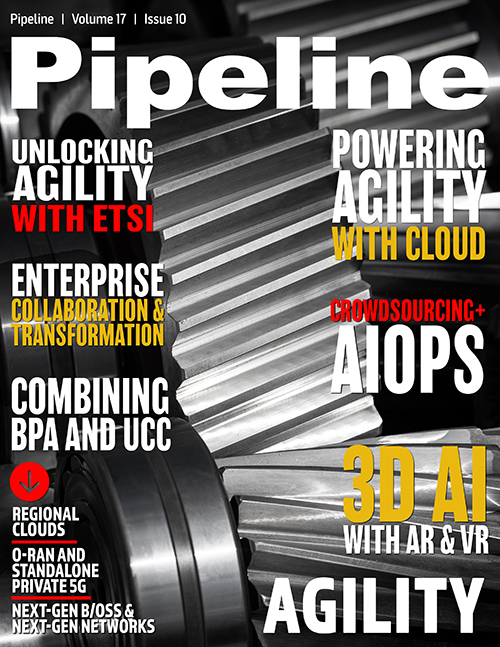Realizing the Enterprise Collaboration Opportunity
By: Ihab Mahna

The past year has presented challenges on a scale unseen for many decades. Around the world, we have seen individuals, organizations and governments face these challenges head-on and adapt to new, different ways of living and working. Throughout all of this, there has been one constant support: technology.
On an individual level, technology has kept us connected while we remain physically separate and provided a wealth of resources to keep us entertained, fit and in touch with those close to us. For businesses of all sizes, technology has been truly indispensable. It has been a lifeline, enabling organizations across all sectors to operate successfully with a remote workforce, facilitated global collaboration between teams and even created new avenues for revenue during challenging economic times.
Now, for the parts of the world that are cautiously emerging from lockdowns, it is time to shift the focus to the future. What is next in the enterprise transformation journey? What needs to happen to ensure that the momentum we’ve gathered over the past year is not lost as we return to normalcy? And how can we, as a technology industry, ensure innovation and adoption of new technologies continues at pace?An accelerated transformation journey
While the impact of COVID has been hugely damaging for so many, the upside is that it has acted like an incubator for digital transformation. For organizations across the globe, the pandemic has highlighted the importance of leveraging technology to enable more efficient ways of working. As a result, business leaders are increasingly prioritizing the implementation of these technologies, with a McKinsey study finding that the most successful organizations during the pandemic reported a range of technology-related capabilities that others lacked.
Now as we look to the next step in this accelerated digital transformation journey, it’s likely that a new, more globally connected breed of enterprise solutions will emerge. Instead of each technology working independently, we will begin to see a greater level of interconnectedness between them, which will dramatically enhance their collective impact. These solutions, or applications, must have a level of global reach and scale that directly helps organizations to survive in today’s globalized world. It is the next stage in a succession of technologies, including 5G, cloud, mobile edge computing, network virtualization and artificial intelligence (AI) or machine learning (ML).
Collaborating for success
There is a huge opportunity in both the monetization and value creation associated with this new breed of technology. But to realize it will require unprecedented collaboration. Success will only be seen, and the benefits only truly realized, when organizations spanning both the public and private sectors work together in a productive, harmonious way. This includes communication service providers, (CSPs), technology vendors, governments, education systems and customer-facing enterprises. It will mean a different way of working, one that is underpinned by connectivity and prioritizes applications that have potential to scale globally for mass benefit.One such example is in the medical sector, where there is a sizeable opportunity to invest in this transformation and in the development of a new breed of applications. In practice, this could look like universities delivering remote medical education for students and hospital staff worldwide through augmented or virtual reality (AR/VR). For this to succeed, it would require collaboration between several communication service providers, cloud providers, AR/VR vendors and medical simulation vendors.
The good news is that we are starting to see this collaborative approach become more commonplace. In the UK, projects like 5G-ENCODE are bringing together organizations from across the public and private sector, including the UK government, Zeetta Networks, Telefonica, and the University of Bristol, to develop clear business cases and value propositions for 5G applications in the manufacturing industry. This collaborative consortium is the business model of the future and will be key to unlocking the plethora of benefits that new technologies promise.
Ingredients for success
Demand for these new breeds of enterprise applications is enormous, thereby presenting a significant opportunity for the organizations that can deliver them. But there are barriers to be overcome first, not least the limited availability of human expertise in each of these technologies, and the relative immaturity of technologies as they currently stand today. Any organization looking to offer these services will need



















